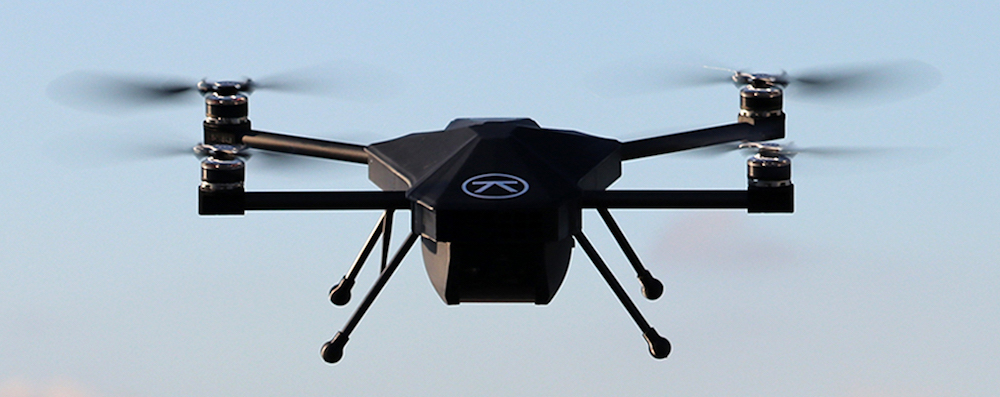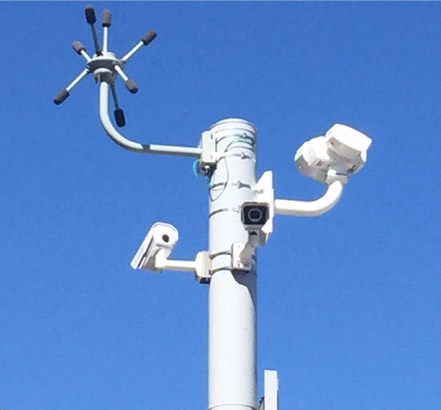Facility Management Security: Technologies for a Solid Defense
When it’s working as it should, facility management security is hard to notice. Like insurance, it’s something you hope you never have to use.
Sooner or later, though, your facility could be the target of thieves, vandals or worse. Having a clear security strategy in place is a must to prevent lost or damaged property.
For those who haven’t prepared a security plan, this article will cover some of the most effective technologies and best practices to get started based on insights from facility security experts.
Here’s what we’ll cover:
What Are the Security Risks for My Facility?
How Do I Get a Security Plan Started?
What New Security Tech Is Around the Corner?
What Are the Security Risks for My Facility?
A great starting point to determine your facility’s security needs is to identify potential risks.
Each organization will have it’s own goals for their security plan. As such, it’s important to confer with executives to nail down exactly what you want the security systems to deliver, says Ronald Ronacher, associate principal at ARUP, which offers building design, planning and management services and consulting worldwide.

“Goals vary from client to client based on the industry they operate within and the type of facility they have, but a common theme among all of them is to provide security for the safety of their staff and visitors.”
Ronald Ronacher, Associate Principal at ARUP
Ronacher says after that primary goal, an organization’s priorities will vary and gives some examples:
Common Security Risks by Type of Facility
Universities and colleges | The biggest security risks to educational properties are active shooter situations and theft of intellectual property, especially that being developed through government or private funding or through industrial collaboration. “Loss of intellectual property does not just have a direct and immediate impact, but it can also impact reputation and result in the loss of future investments and opportunities,” he says. |
Hospitals and other health care facilities | Hospitals need to protect patients and patient information, as well as prevent theft of equipment. “It is important to note that not all health facilities provide the same services, and various services have a significant impact on the security strategy,” he says. For example, labor and delivery, mental health or domestic violence care facilities could require more stringent security protocols. |
Government buildings | The biggest security risks to government buildings are those directed to intentionally cause death and injury. |
It’s pretty obvious when security fails; It’s easy to notice when a Matisse painting goes missing, or when a newborn is taken from a hospital nursery. Sometimes, however rare, says Ronacher, companies can see positive confirmation of the effectiveness of the security solution.
For example: An ARUP client in the construction industry was able to spot an attempted theft of expensive construction materials including electrical wiring and plumbing fittings for the valuable copper.
“The video surveillance system provided coverage of the laydown area that the contractors were using for storing their materials,” he says. “The security office, which is staffed to provide continuous monitoring, observed suspicious activity in the laydown.”
Clearly, without the basic video monitoring systems, this company would have lost thousands of dollars and experienced a delay in progress.
Before starting a security plan, gather a few key pieces of information:
The assets your company owns
The risks associated with your facility
The consequences of those risks
“This will help an organization make an informed decision as to what threats and risks need to be mitigated and which ones they might accept,” Ronacher says. “The next step is to develop the mitigation strategy and then implement it.”
How Do I Get a Security Plan Started?
Facility managers and executives must arrange various people, assets, technology and policies appropriately to establish an effective security plan.
Ronacher stresses that for “any security technology or strategy to be effective, there must be appropriately trained staff included as part of the equation.”
Which Technologies Do I Need?
After clear security objectives and trained staff, we can focus on technology. The two basic building blocks of security are:
Building Blocks of Facility Security
Access control alarm monitoring system (ACAM) | Access control refers to the act of selectively controlling the access of certain rooms, areas or entire buildings. An ACAM helps manage and monitor access. These typically offer an interface to alert users to intrusions or other problems, and can integrate with all kinds of security technologies. “An access control system is typically something most companies will start with because it helps address the basic security principles of deter, detect, delay and deny,“ Ronacher says. |
Video surveillance system (VSS) | A VSS provides live monitoring of locations with a network of cameras and can store recordings of specific events for use in investigations and as evidence. |
This is a smart place for smaller companies to start—the market for access control systems is large and growing, which means competitive pricing and a wide array of options and unique features for buyers, Ronacher explains.
Who Should Be Involved?
Next, gather the appropriate people to flesh out the security plan. This should include:
Executives who can make decisions and have the ability to enforce the strategy to be followed
Any existing security personnel
Leaders from the IT department
Facilities managers
“It is also recommended that a qualified and experienced security consultant be engaged who can conduct the threat and risk assessment, lead the security workshops and oversee the development of the security strategy,” Ronacher says.
“Depending on the type of facility and the recommended mitigative strategies, involvement by an architect and engineers may also be required.”
How Can I Ensure the Plan Is Effective?
Get together with your team and ask them: What goals are not met with the core surveillance and access control? You may discover you need additional measures to protect your organization, and security consultants can offer suggestions.
And once everything is in place, the manufacturers of your systems can help with best practices to maintain and test them.
“The security strategy should be subjected to the cyclic process of: analyze, develop mitigation strategies, select mitigation strategies, implement, operate and then start from beginning with analyze,” he says.
What New Security Tech Is Around the Corner?
Video cameras and access controls have been used in security for a long time and continue to improve in effectiveness and features. One such advancement is a move toward the cloud.
Many other technologies have cropped up in recent years to tackle more specific security issues, and depending on your particular goals, these could deliver the capabilities you need.
Here are a couple to keep an eye on:
Drones
It’s a popular stocking stuffer for the kids or dad, but drone technology has a wide range of security applications.
Nightingale Security offers autonomous robotic aerial security for various industries, says Cary Savas, VP of marketing for the company.

A drone from Nightingale Security can perform surveillance and help with maintenance tasks
From vehicle manufacturers with 10,000+ cars to massive agricultural operations, Savas says drone security will become commonplace in many security plans, especially those for organizations with multiple facilities and large perimeters—solar farms, oil and gas facilities, power plants, rail yards, dams, prisons, mines etc.
Savas says drones are multipurpose; one international client, for example, will be using them for maintenance to save on labor costs.
“They’re also going to use it to inspect the solar panels—too much dust limits the panel effectiveness, damage, proper titling of the panels to follow the sun etc.,” he says. “They currently use expensive manual labor by engineers to do these things.”
For large government and corporate facilities, drones can work well. College campuses, however, have some regulatory issues and privacy concerns that will take time to work out.
Gunshot Detection
Even if a gunshot doesn’t result in an injury or death, law enforcement, local residents and businesses need to know the source of it. Ronacher says some organizations are implementing gunshot detection systems.

_A gunshot detection and video surveillance setup
(Source: shooterdetectionsystems.com)_
The technology uses 360-degree sensors, microphones or cameras to detect a gunshot occurring in the surrounding area, calculate its point of origin and notify the appropriate people. These are often integrated with a geographic information system (GIS) to pinpoint the location on a map.
These are becoming more common on college and university campuses to quickly locate incidents.
Recap and Takeaways
Companies have many reasons to prepare a security plan for their facilities, and it’s a pretty straightforward process to create, implement and maintain. To recap:
Identify your assets and risks
Gather key personnel to determine security goals
Implement core access control and surveillance
Implement additional security to meet your particular needs
Appropriately train and assign staff to follow security processes
Test and maintain security systems and protocols
Much of the plan will depend on your facility type and personnel, so consider working closely with a security consultant or vendor to get the best systems to achieve your security goals.
Software such as a facilities management (CAFM) system can help throughout this process. Most CAFMs include asset tracking and inventory management to help identify your most important machinery, tools or materials to protect.
A facilities management system typically also offers a CAD-based 3D file of the building to easily spot high-risk areas of a building.
And finally, most CAFMs also let users store important documents, such as those that prove employees are trained and in compliance with your security plan.
For more information about facilities management software, check out our top CAFM systems or integrated workplace management systems.